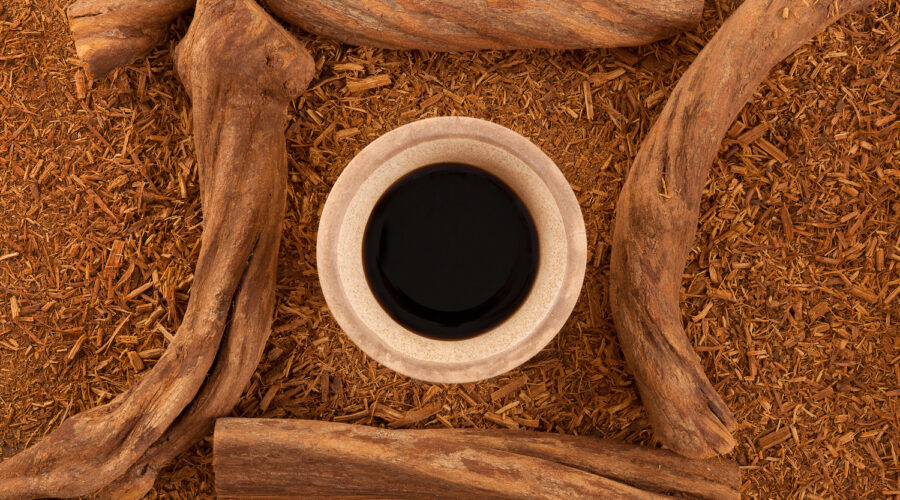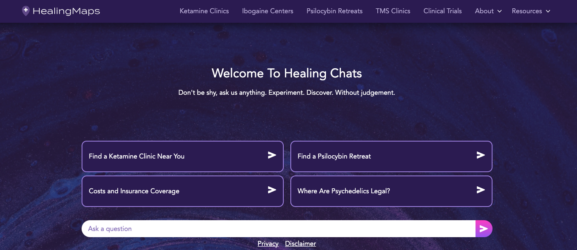How To Engage In Ethical Ayahuasca Tourism
In recent years, interest in the sacred Amazonian brew ayahuasca has seen a surge in popularity amongst people from outside of the indigenous communities that have used it for centuries. As more and more people seek out ayahuasca for healing and transformation, the number of retreat centers, both inside and outside the Amazon, has boomed.
From Peru to Colombia, Costa Rica to Europe, retreat centers are providing Westerners with the chance to take part in powerful, transformative ceremonies with this sacred medicine.
However, like with any ancestral tradition, taking ayahuasca brings with it a number of ethical considerations.
The indigenous communities that have safeguarded this medicine for centuries have endured persecution, exploitation, and extractivism at the hands of colonizers and outsiders, and many still face these issues today. It’s our responsibility to ensure that our desire to take this medicine and benefit from indigenous cultural practices in no way results in further exploitation and damage to their communities. Rather, the expansion of ayahuasca should be done so in a way that supports indigenous self-determination, access to income and opportunities, and the preservation of their territories.
Taking ayahuasca is far more than just ingesting a psychedelic substance. It’s a rich tradition that spans through generations, utilizing its sacred healing powers.
Here is how to engage in ayahuasca tourism in a way that honors the process — and those who safeguard it.
RELATED: Why Aaron Rodgers’ Ayahuasca Admission Is Significant, And What We Can Learn From It
Show Respect For The Traditions
Taking part in an ayahuasca ceremony means showing respect for the tradition and culture of the medicine.
For participants, this means sticking to specific guidelines around the ayahuasca diet or consumption of other substances during the retreat. It also means learning about the history of the tradition and source of the medicine. Lastly, be sure to use language that’s respectful of the culture.
For example, a statement put out by the Shipibo-Konibo and Xetebo peoples of Peru stated that the term they use for their practitioners is ‘Onanya,’ which means ‘the one who knows’ — and that the word ‘shaman’ does not apply to their culture.
Melissa Stangl, Founding Partner and COO of Soltara Healing Center, which has centers in both Costa Rica and Peru, highlights the importance of how true the retreat organizers and facilitators stay to the tradition that the medicine comes from.
Stangl recommends finding out: “Are they mixing traditions and medicines? Is their surrounding programming in support of/aligned with the tradition? And if not, is there an energetic interference according to the tradition or Maestro/a?”
It’s not uncommon to find foreign-owned retreat centers that combine different medicines, cultures, and traditions — often without the explicit approval of the communities who have safeguarded the medicine for centuries.
It’s also crucial to understand the similarities and differences between our own ancestral traditions and those of Amazonian communities, says Carlos Tanner, Director of the Ayahuasca Foundation in Peru.
“I think one important key to respectfully engaging is to remember that our own ancestral traditions were very similar to the ones still intact in places like the Amazon rainforest. When we remember how incredible our own ancestral cultures were, it can help us to recognize how incredible all ancestral cultures are. Within that awareness is inevitable awe and respect for the continuous development of human culture,” says Tanner.
“Another important element to understanding is the recognition of distinct paradigms, that our own perspective has been shaped and influenced by our current culture, and we view the world very differently than many indigenous cultures,” he says.
Support Self-Determination
As a result of the growth of interest in ayahuasca from foreigners and a desire of many to help spread the power of the plant, many Western-owned retreat centers have emerged in South and Central America. This means that foreign-born owners are often partnering with and employing locals to conduct ceremonies and help run the center.
Westerners visiting foreign-owned retreat centers should enquire about the ways in which the owners of the center involve local employees and curanderos/as in decision-making and how they are financially gaining from the project.
Unfortunately, in these cases, local guides and facilitators often don’t receive fair remuneration for their contribution. They may also have little decision-making ability. This breeds inequalities in communities that offer ayahuasca tourism and puts power and resources in the hands of outsiders.
“For those looking to work with the medicine in a patient capacity, it’s so important to ask the right questions when seeking out a space to partake in ceremony,” says Stangl.
“Are they working directly with indigenous healers, and if not, are they ensuring that their teachers and the tradition they are stewarding are receiving some of the benefits of their work? Are they paying fair wages to their healers or Maestros? Are they educating their community about the work in a culturally-informed way?” — these are some of the questions that she suggests asking. This ensures that local facilitators and team members, especially indigenous people, are compensated fairly and benefit from the project.
RELATED: Kambo Medicine: Benefits, Risks and Controversy
Give Back to the Community
One of the most crucial elements of ethical ayahuasca tourism is how a retreat center engages in reciprocity. It’s advisable to look for centers that actively support their local communities and work to preserve the environment around them.
Does the retreat center have its own non-profit initiatives? Does it support local organizations that are engaged in social and environmental work? Are they engaged in environmental initiatives such as reforestation, permaculture, and regenerative development? Is the center using sustainable practices? Does the center purchase goods and services from local sources and employ local people at a fair wage? These are some of the questions you should consider asking.
“Our center is located within a jungle community, so it is easy to support that community financially with a percentage of our profits, by offering employment, by purchasing goods from the community, and by making donations,” says Tanner of Ayahuasca Foundation.
“Helping the communities in close proximity to the center helps develop positive relationships that foster environments of sharing with and caring for each other. I think local support is often the most effective, although our organization also supports more global organizations such as RAIN and OMA to support sustainability and the preservation of the rainforest.”
Giving back should be a key pillar of the philosophy of any ayahuasca retreat center. This is true whether it’s located in an indigenous community or not. And choosing a center that honors this is a key part of engaging in ethical ayahuasca tourism.
“As this medicine work continues to expand into the Global North, it’s important to ensure that the indigenous healers and communities these medicines came from are also receiving the benefits of that expansion, that the center is also a respectful cultural bridge that platforms indigenous voices, and that these centers are allies in protecting the Amazon, the source of not only ayahuasca but Earth’s biodiversity, lungs, and pharmacopeia,” explains Stangl of Soltara.
“For Soltara, this mission is four-fold in action:
- Working directly with and financially supporting the healers and their families, communities, and projects.
- Using our platform to center indigenous voices, wisdom, and their cosmology.
- Ensuring that the ayahuasca that we use is sustainably sourced, and that we continue to support the replanting of ayahuasca in the Amazon.
- Donating to organizations who work with integrity and are on the frontlines of indigenous reciprocity and Amazon conservation.
Stangl adds: For example, the Indigenous Reciprocity Initiative of Chacruna, Amazon Watch (who work in solidarity with indigenous communities), and the Amazon Rainforest Conservancy (for which we have recently matched donations up to $10,000 to fund a jaguar corridor).”
RELATED: Modernized vs. Traditional Ayahuasca Ceremonies: Which is Right For You?
Avoid Fake Facilitators
With the rise of ayahuasca tourism — and the financial opportunities it brings — a new wave of imposter and charlatan facilitators has emerged. Training to serve ayahuasca is a long and arduous process. In fact, it often takes a decade before someone is able to hold their own ceremonies.
However, with the uptick of people seeking out ayahuasca experiences, many of whom may be uninformed about what to look for, incompetent facilitators who have not completed the necessary training are now serving the medicine. This is unethical and disrespectful to the medicine. It’s ignoring tradition and those who put in the necessary work. Most importantly, it’s dangerous for participants.
“The new generation is looking for the easiest way,” says Taita Jhon Muchavisoy, a traditional healer from the Inga community of Putumayo, Colombia. “Many people who serve yagé (ayahuasca) in Colombia don’t know about the medicine and what it contains. They don’t know how the indigenous communities live, or what the jungle is like,” he says.
“A patient has every right to ask [the taita] who they trained with, how many years they have been taking yagé, which community they come from, or whether they’ve lived there [in the community],” he adds.
An authentic, legitimate facilitator can come from anywhere — they don’t have to be indigenous. However, they do have to have gone through rigorous training, practicing a dedication to their vocation of service. Without this, ceremony participants put themselves at risk.
Taita Jhon explains that after attending a ceremony with a ‘fake’ taita, “many patients have died. People have gone crazy. But yagé isn’t like that. Yagé doesn’t make you crazy.” There have also been many instances of sexual abuse in ayahuasca circles.
It’s important to vet any retreat center that you are considering working with, and to review Chacruna’s safety guidelines. This can help you ensure that you are taking the medicine with facilitators that are responsible and trustworthy.
Whether you decide to attend a retreat in the depths of the Amazon, in a luxury Costa Rican resort, or somewhere closer to home, it’s important to take into account the ethical considerations that come alongside taking this sacred medicine. There are plenty of retreat centers out there with a commitment towards reciprocity and sustainability. If you make sure to ask the right questions during your search, you can ensure that you’re supporting, honoring, and respecting the ayahuasca tradition and the lineage it comes from.
If you’re seeking more guidance on which center to choose, read how to find the right ayahuasca retreat for you.



